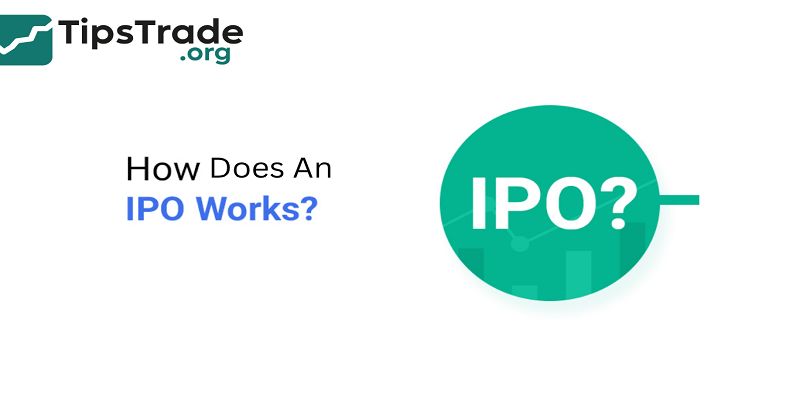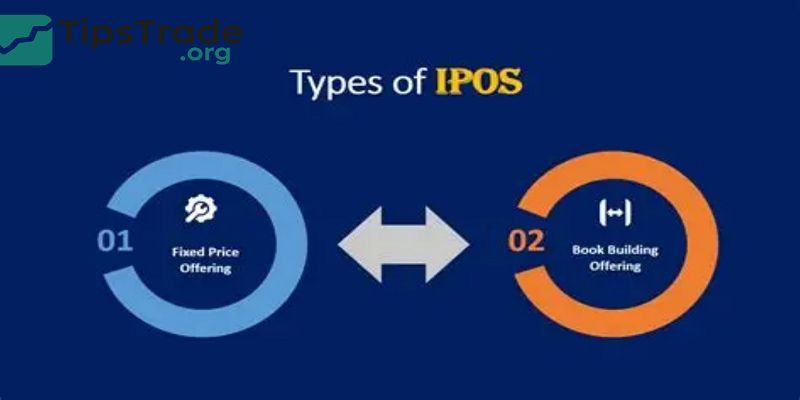IPO explained is a fundamental concept that reveals how private companies transition to becoming publicly traded entities on the stock market. This process is crucial because it enables companies to raise substantial capital by offering shares to the public for the very first time. Through an IPO, businesses gain access to new funding sources that can fuel expansion, innovation, and increased market presence. At the same time, it opens investment opportunities for individual and institutional investors eager to participate in the company’s potential growth. Explore all the information at Tipstrade.org — detailed article waiting for you below
What Is an IPO?
- An Initial Public Offering (IPO) is the process through which a private company offers its shares to the public for the first time.
- This marks the transition from a privately held company to a publicly traded one on a stock exchange like the NYSE or NASDAQ.
- When a company goes public, it sells ownership shares (known as stock) to raise capital for expansion, debt repayment, or investment in new projects.
- According to the U.S. Securities and Exchange Commission (SEC.gov), IPOs must follow strict regulations to ensure transparency and protect investors.
- In simpler terms, an IPO is like a company “opening its doors” for public investment.
- For example, when Facebook went public in 2012, it allowed everyday investors to buy shares and participate in the company’s future growth.
- Key takeaway: An IPO helps a company access large-scale funding while giving investors a chance to own part of a promising business.
>>See more:
- What is the NYSE? Understanding the New York Stock Exchange
- Market Cap Stocks: What They Are and Why They Matter for Investors
- What is Stock Liquidity? Why It’s Important for Investors
- Primary vs Secondary Market: Key Differences Explained
How Does an IPO Work?

The IPO process involves several stages and participants. It’s not a single event but a multi-step journey guided by financial experts and regulators.
Main steps in an IPO
- Preparation & due diligence: The company hires investment banks (called underwriters) to prepare financial statements and file the required documents with the SEC.
- Filing a registration statement (Form S-1): This document discloses the company’s business model, risks, and financial health.
- Roadshow: Company executives and underwriters present the IPO to potential investors.
- Pricing and allocation: The IPO price is set based on market demand and valuation.
- Listing day: Shares start trading publicly.
For instance, during Airbnb’s 2020 IPO, the company priced shares at $68 each, but they opened at $146, showing strong investor demand (source: Bloomberg).
In short: The IPO process transforms a private company into a public one under regulatory oversight and market evaluation.
Types of IPOs Explained

Not all IPOs follow the same path. Companies can choose between several formats depending on their goals, costs, and market conditions.
Traditional IPO
- The most common method.
- Investment banks underwrite the offering, buy shares from the company, and sell them to the public.
- Provides strong marketing support but comes with high fees.
Direct Listing
- Companies skip underwriters and list their shares directly on the exchange.
- Saves costs but offers less price stability.
- Used by firms like Spotify (2018) and Slack (2019).
SPAC (Special Purpose Acquisition Company)
- A “blank-check” company raises money through an IPO to acquire another business later.
- Became popular in 2020–2021 but later declined due to regulatory concerns (Investopedia).
Summary table:
| Type | Underwriter? | Cost | Example |
| Traditional IPO | Yes | High | Airbnb, Facebook |
| Direct Listing | No | Moderate | Spotify, Slack |
| SPAC | Yes (indirect) | Variable | DraftKings |
Benefits of Going Public
Going public can be a turning point for a business. The advantages are both financial and reputational.
Access to Capital
- An IPO helps companies raise significant funds to fuel expansion, research, or acquisitions.
- For example, Alibaba’s IPO in 2014 raised over $25 billion, the largest in history (source: Bloomberg).
Brand Visibility and Credibility
- Listing on a major exchange boosts trust among customers and partners.
- Investors often view public companies as more transparent and stable.
Liquidity for Existing Shareholders
- Early investors and employees can finally sell their shares on the open market.
- This provides flexibility and potential profit.
Growth Opportunities
- With more capital, a company can scale operations faster, attract talent, and strengthen its market position.
- However: Each benefit also comes with trade-offs — which we’ll discuss next.
Risks and Drawbacks of IPO Explained
While an IPO sounds glamorous, it also brings new responsibilities and risks.
High Costs and Complex Regulations
- Preparing an IPO requires legal, accounting, and underwriting fees that can exceed 7% of total funds raised (SEC data).
Public Scrutiny
- Public companies must disclose financial results quarterly.
- This transparency increases accountability but can also pressure management to focus on short-term profits.
Market Volatility
- Once listed, a company’s value fluctuates daily. A poor market debut can damage its reputation — as seen in Uber’s 2019 IPO, which dropped 7% on its first trading day (source: CNBC).
Loss of Control
- Founders often dilute ownership and decision-making power when selling shares to the public.
- Bottom line: IPOs can open big opportunities — but only for companies ready to handle the scrutiny and costs.
How Investors Can Participate in IPOs

Investors can buy IPO shares in two main ways — before the listing (primary market) or after the listing (secondary market).
Through a Brokerage
- Many brokerages (like Fidelity, Robinhood, or Charles Schwab) offer IPO access to eligible clients.
- Each firm sets different requirements based on account balance and experience.
Via Mutual Funds or ETFs
- Some investors prefer indirect exposure through funds that hold IPO shares.
- For instance, the Renaissance IPO ETF (IPO) tracks newly listed companies.
Evaluate Before Investing
Before jumping in, analyze:
- The company’s business model and revenue growth.
- Valuation compared to peers.
- Lock-up periods restricting insider sales.
Pro tip: The SEC warns retail investors to avoid hype-driven IPOs without proper research (SEC Investor Education).
Real-World Examples of Famous IPOs
Learning from history helps investors understand how IPOs perform under different conditions.
| Company | Year | IPO Price | First-Day Performance | Source |
| 2004 | $85 | +18% | Bloomberg | |
| 2012 | $38 | +23% | Reuters | |
| Alibaba | 2014 | $68 | +38% | CNBC |
| Airbnb | 2020 | $68 | +113% | Bloomberg |
Each of these cases reveals something unique:
- Google’s IPO introduced a Dutch auction system to promote fairness.
- Facebook’s IPO taught investors about valuation bubbles.
- Alibaba’s IPO showed global investor enthusiasm for tech firms.
- Airbnb’s IPO reflected post-pandemic optimism for digital platforms.
These stories illustrate both the potential rewards and the unpredictability of public offerings.
IPO vs Private Placement And Direct Listing
Understanding alternatives to IPOs helps businesses choose the right funding path.
| Method | Who Can Invest | Regulation Level | Cost | Example |
| IPO | Public investors | High | High | |
| Private Placement | Selected investors (VCs, funds) | Moderate | Moderate | SpaceX |
| Direct Listing | Public | Medium | Low | Spotify |
Key Differences:
- Private Placement offers quicker fundraising but less liquidity.
- Direct Listing avoids underwriters and dilution.
- IPO provides maximum visibility and liquidity but requires extensive compliance.
In essence: IPOs are ideal for mature companies ready to scale globally, while smaller or niche firms may prefer private options.
Conclusion
IPO explained underscores the vital importance of initial public offerings in shaping the financial landscape by connecting companies with broader capital markets. Understanding the IPO process equips investors with the knowledge to evaluate potential risks and rewards, while also helping companies plan and execute their public debut efficiently. Ultimately, the IPO serves as a bridge between private enterprise ambitions and public investment interests, driving economic growth and innovation forward.
See more:

